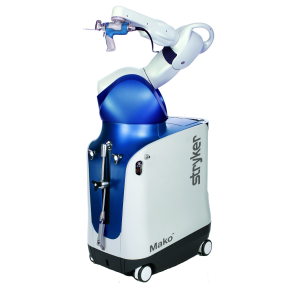hip

Hip pain is common in adults and often causes functional disability. Among adults who play sports, the incidence of chronic hip pain is 30 to 40 percent. Among all adults over 60, the incidence of hip pain is 12 to 15 percent. Hip joint labral injuries and synovitis are common causes of hip pain in younger adults, while trochanteric pain syndrome and osteoarthritis become more common with aging. There are many other reasons you may have hip pain, including bursitis, tendinitis, strains, dysplasia, and more. You can even feel hip pain from compensating your weight to alleviate knee pain.
Fortunately, finding the root cause of hip pain is generally fairly easy for your doctor, using diagnostic tools such as Xray or MRI.
Normal Anatomy of the Hip joint
How does the Hip joint work?![]() PLAY THE VIDEO: ANATOMY OF THE HIP
PLAY THE VIDEO: ANATOMY OF THE HIP
Hip Arthroscopy
Hip arthroscopy is a relatively new surgical technique that can be effectively employed to treat a variety of hip conditions.
For more information about Hip Arthroscopy, click on below tabs.
Femoro Acetabular Impingement (FAI)
Femoroacetabular Impingement FAI is a condition resulting from abnormal pressure and friction between the ball and socket of the hip joint resulting in pain and progressive hip dysfunction. This when left untreated leads to the development of secondary osteoarthritis of the hip.
For more information about Femoro Acetabular Impingement FAI, click on below tab.
Total Hip Replacement (THR)
Total Hip Replacement (THR) procedure replaces all or part of the hip joint with an artificial device (prosthesis) to eliminate pain and restore joint movement.
Your surgery may be performed using the Direct Anterior Approach, a minimally invasive surgical technique used in total hip replacement. This technique may be associated with:
- reduced muscle damage
- reduced pain
faster post-operative recovery
What are the differences between the Direct Anterior Approach and a traditional hip replacement? One difference is the location of the incision. During a traditional hip replacement, the surgeon will operate on the patient from the side. Using the Direct Anterior Approach, the surgeon operates on the patient from the front. Another difference is the length of the incision. Traditional hip replacement may require an 10-12 inch incision while the incision used in the Direct Anterior Approach may be 3-4 inches in length.
Hip Resurfacing
Hip Resurfacing or bone conserving procedure replaces the acetabulum (hip socket) and resurfaces the femoral head. This means the femoral head has some or very little bone removed and replaced with the metal component. This spares the femoral canal. Find out more about Hip Resurfacing from the following options.
For more information about Hip Resurfacing, click on below tabs.
Revision Hip Replacement
This maybe because part or all of your previous hip replacement needs to be revised. This operation varies from very minor adjustments to massive operations replacing significant amounts of bone and hence is difficult to describe in full.
For more information about Revision Hip Replacement, click on below tabs.
You may also be interested in learning about Robotic Hip Procedures
